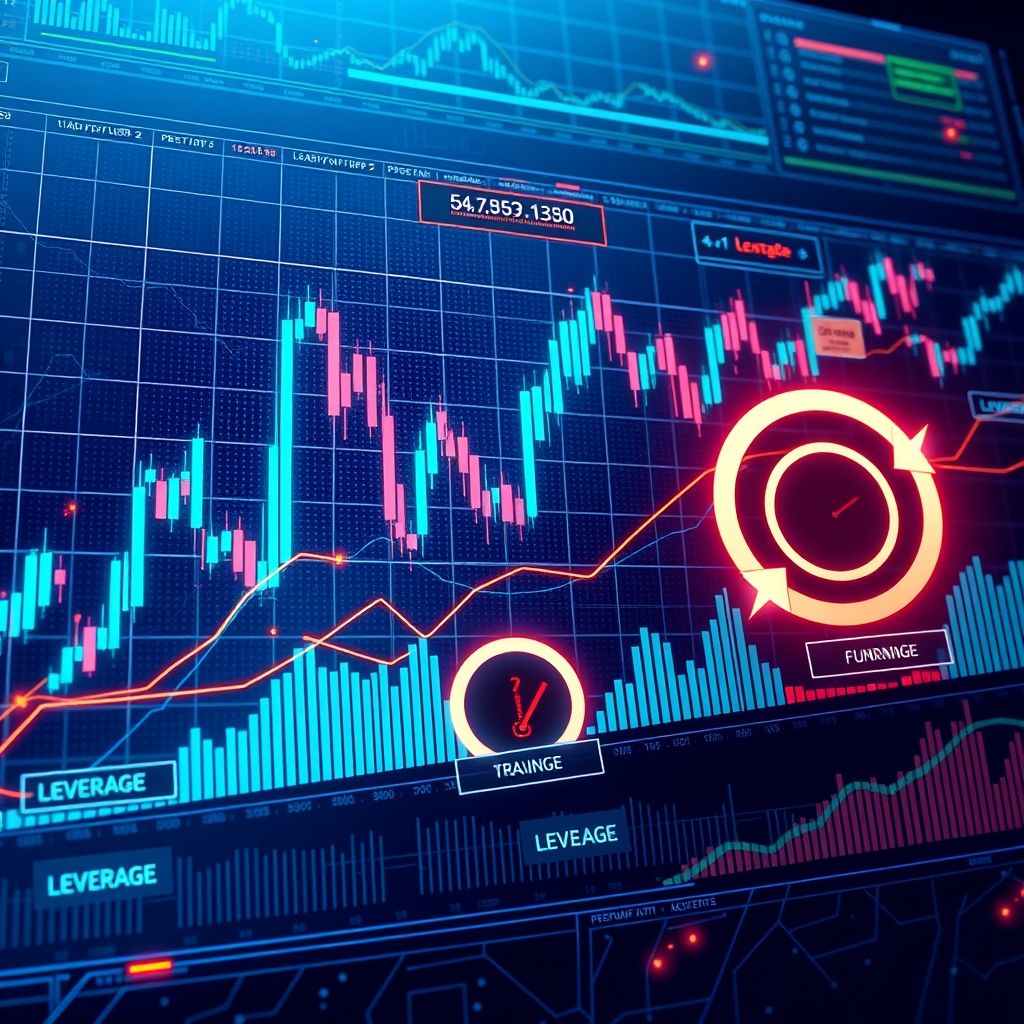How is funding rate calculated in Perpetuals?
How Is Funding Rate Calculated in Perpetuals?
Imagine youre trading crypto futures, and every day your position feels a little different depending on market sentiment. One key concept behind this is the “funding rate”—that little fuel that helps perpetual contracts stay tethered to the underlying asset’s price. But how exactly is this rate determined? Let’s break it down.

What’s the Funding Rate Anyway?
The funding rate is like an ongoing “cost” or “payment” exchanged between traders holding long and short positions in perpetual contracts. Unlike traditional futures that settle at a future date, these contracts can go on forever—hence the “perpetual.” The funding mechanism ensures their prices don’t drift too far apart from spot prices, keeping everything in check.
Think of it like a tug of war; if the contract’s price is higher than the spot, traders betting on the future pay the others to encourage price correction. When it’s lower, the flow reverses. This system maintains alignment in the market without the need for expiration and settlement.
How Is the Funding Rate Calculated?
At its core, the funding rate is composed of two main parts:
- Interest component: Reflects the cost of leverage, similar to borrowing costs.
- Premium/discount component: Based on the difference between the perpetual contract price and the spot market price.
Here’s the general idea:
Funding Rate = (Interest Rate Adjustment) + (Premium/Discount Adjustment)
But the devil’s in the details. The exact calculation often looks something like this:
- The interest rate is often a fixed or semi-fixed percentage, based on prevailing interest rates or cost-of-capital figures.
- The premium/discount is calculated as the difference between the perpetual’s price and the spot price, scaled by an adjustment factor, usually over a specific period like 8 hours.
For example, if the perpetual is trading 2% above the spot, traders holding long positions might be required to pay a certain percentage to short position holders. That “certain percentage” — the funding rate — fluctuates depending on market volatility, liquidity, and the ratio of long to short traders.
Practical Insights and Real-World Examples
Say Bitcoin is trading at $20,000, but the perpetual contract is at a slightly higher price, say $20,050. This indicates a bias towards bullishness—more traders are going long. To balance things out, the funding rate might turn positive, meaning long traders pay shorts. Conversely, if the perpetual price dips below spot, the rate goes negative.
During high-volatility periods, these rates tend to spike. You’ve probably noticed that during a bull run, funding rates can hit 0.1% every 8 hours—or even more, making leveraged positions costlier if held long-term. It’s a double-edged sword: higher costs can deter over-leverage but also reflect genuine market sentiment.
Why Does This Matter for Traders?
Understanding how funding is calculated helps traders manage costs and risk. If you’re betting on a trending market with high funding fees, it might be smart to restrict your leverage or set tight stop-losses. Conversely, during periods of low or negative funding rates, it could be a good time to hold or open long positions.
In an industry where options, stocks, commodities, and forex markets sometimes overlap with crypto trading, awareness of these mechanisms becomes critical. The ability to read funding rates can give you an edge—knowing whether the market is overly bullish or bearish helps craft smarter strategies.
The Future of Decentralized Finance and Perpetuals
As decentralized finance (DeFi) marches forward, the promise of trustless, algorithm-driven trading is becoming more tangible. Decentralized protocols aim to automate and transparentize these funding mechanisms via smart contracts, removing some central authority risks and increasing accessibility.
But challenges remain—liquidity fragmentation, security vulnerabilities in smart contracts, and the need for robust oracle feeds are current hurdles. Still, with the integration of AI-driven trading algorithms and real-time data analysis, the potential for smarter, more efficient funding mechanisms is immense.
Imagine a future where your perpetual trading bot can dynamically adjust leverage based on predictive algorithms forecasting funding rate shifts, reducing costs and maximizing gains. That’s the game-changing outlook.
Looking Ahead: Trends and Strategies
The ongoing evolution of decentralized finance suggests a future filled with hybrid models—combining AI, smart contracts, and cross-asset trading. Traders who stay ahead of how funding rates fluctuate—and leverage technology to predict these changes—will hold a competitive advantage.
Whether it’s forex, stocks, indices, or commodities, the core principles remain: understanding the mechanics allows for smarter risk management and more precise timing.
Funding rates are more than just a fee; they’re a reflection of market sentiment and liquidity—key signals for savvy traders. Keep an eye on these numbers, and youll navigate the wild world of perpetuals with more confidence.
Your edge in perpetual trading starts with understanding how funding works—power up your strategy today.